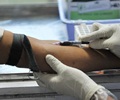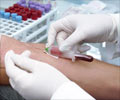
Currently, the Centers for Disease Control and Prevention (CDC) recommends antibody screening only of individuals with health or lifestyle indicators suggesting potential infection. These indicators include a history of injecting drugs, having a blood transfusion before 1992, or being a chronic hemodialysis patient. Low case identification may result from the difficulty of implementing risk-based screening given the limited time of primary care visits and unease in discussing behavioral risks.
Researchers sought to determine if proactively screening the birth cohort of people born from 1945 through 1965 for HCV would be cost effective in the primary care setting. They developed a computer model to analyze the cost effectiveness of four scenarios: 1) no screening or treatment; 2) risk-based screening and standard treatment (pegylated interferon and ribavirin); 3) birth cohort screening with standard treatment; 4) birth cohort screening with standard treatment for patients identified with hepatitis C genotype 2 or 3, and standard treatment plus a direct acting antiviral drug (DAA) for patients identified with genotype 1 disease (the most prevalent genotype in the U.S.).
The researchers found that compared to the current strategy of risk-based screening, birth cohort screening followed by standard treatment reduced deaths by 82,300 at a cost of $15,700 per quality adjusted life-year (QALY) gained. Incorporating DAA treatment to standard therapy when indicated would prevent approximately 121,000 deaths compared to risk-based screening at a cost of $35,000 per QALY gained.
"The important things to remember about birth cohort screening are that, first, the strategy would identify over 800,000 people with hepatitis C if it were fully implemented, and second, the strategy is at least as cost-effective as many routinely administered preventive practices such as breast cancer screening or colorectal screening," said David Rein, PhD, Principal Research Scientist, Public Health Research Department, NORC at the University of Chicago, and lead author of the study.
Source-Eurekalert















